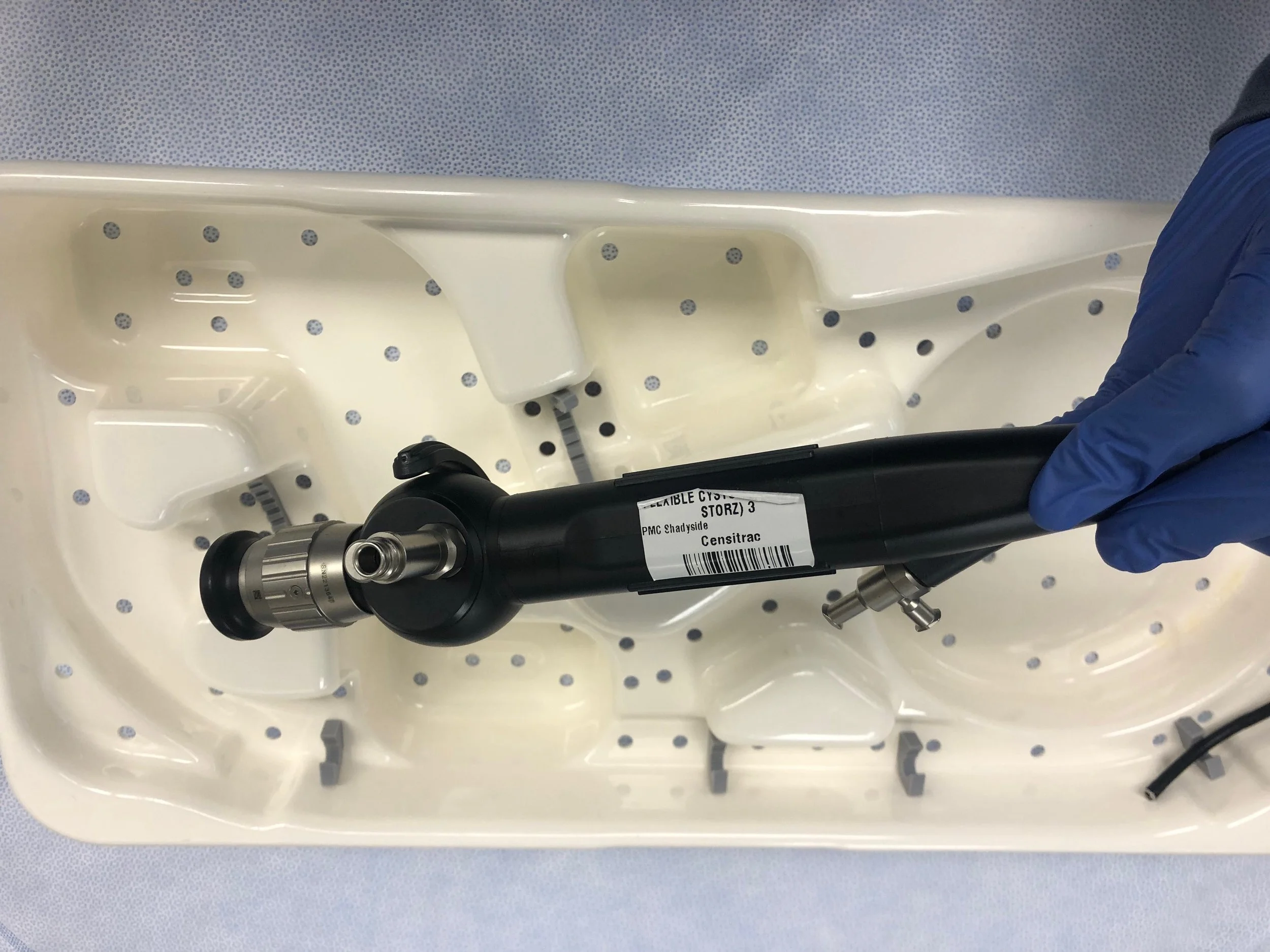SURGICAL INSTRUMENTS & ENDOSCOPES :
CENTRAL STERILE PROCESSING
Marilyn W. Shumba, M.Sc., Central Sterile Processing Technician (UPMC)
Published July 9, 2022
Who Are Central Sterile Processing Technicians?
Killing microbes to inhibit infections is the most important part of work that must before surgery can take place. I am not talking about just cleaning and disinfecting the environment, although this too needs to be done, but, what I am getting at is sterilizing the instruments that enter a patient’s body. Central Sterile Processing Technicians, are highly trained healthcare professional, that are the number one germ or microbe killers of instrument related micro-organisms & ensurers of instrument functionality before it gets in the surgeons’ hands. They DECONTAMINATE, examine, test functionality, ASSEMBLE & PACK, STERILIZE, STORE & Distribute General & Specialty Related Surgical Instruments & Advanced Technological Instruments to the O.R. surgeons and their assisting technicians, nurses and PAs. They process many instruments each day, and as a team they work all days of the week and all hours as a team, to remain prepared for surgical emergencies that could occur after work hours. When new technology comes, they have to be on it as well, because it’s their responsibility to give not just a sterilized, but functional tool to the surgeon. They must acquire knowledge to decontaminate, sterilize and test instruments from all different types of surgeries; this is great knowledge, and in addition, new C.S. techs are required to be certified, and formally educated on subjects surrounding surgery, even basic anatomy, and microbiology.
Although they are behind the scenes and barely recognized; C.S. techs, play one of the most vital roles; indirectly keeping patients alive, minimizing any chances of infections, to their greatest ability. They are trained to multitask, teach, and increase knowledge with new training programs, and years of experience. They should be well compensated - if not already, along with surgical techs. Without this team, Surgeons cannot perform surgery. The surgical team involves the physicians, C.S. Tech, Surg. Techs, Surg. Nurses, Anesthesiologists, Administratives team, Cleaners, Managers, Supervisors and such - they all have to work together for surgeries to go well in the hospital. When surgeons cannot find anything, they call the Central Sterilize Processing Techs via the Surgical technicians or Nurses; and even in an emergency, it is these techs. that rush to get the instruments prepared for the surgeons.
In summary: Central Sterilize Processing Technicians are the team of highly skilled professionals that get various sterilize surgical tools including endoscropes completely ready for patients and on time to help save patients’ lives.
IMAGES
Electronic Instruments: Endoscopes, Cameras, Batteries are sterilized using the STERRAD (according to the manufacturer’s instructions).
1) Electronic instruments are received from the O.R. and then they are decontaminated following the manufacturer’s instructions, following that they are put in a dryer to dry. Later on a CS Tech takes them out and confirms if they are completely dry. The CS tech examines the equipment to ensure that it is dry and functional before wrapping it and placing it in the STERRAD machine. A paper is not used to cover instruments that are put in the STERRAD because hydrogen peroxide could be absorbed by the paper.

Image 1: Doppler Probe - This type of Doppler Probe is used for measuring arteries to determine their elasticity. The size of the vessel determines which Doppler Probe is appropriate or more sufficient for a procedure, e.g. deeper and larger arteries will be measured using a 4 MHz probe, whereas, more superficial and smaller ones are measured using 8 MHz probes. (VIASONIX, 2021)

Image 2: Doppler Probe - View of the tip/top. Doppler ultrasound is used to quantitatively approximate blood flow rates of blood vessels by measuring ultrasound related changes in frequencies. (Sheps, 2019).
Image 3: Telescope - Telescopes are used when performing laparoscopic surgery. The telescopes comes in different diameters and degrees. A Central Sterile Processing Technicians must make sure that they wrap the correct scopes, of the correct sizes before sterilization. Telescopes can be 5mm - 10mm, 0 - 30-degrees. They have an eye piece - where a CS tech can put a camera to test functionality and they have, a light port - where a CS tech can attach an adaptor and then screw a light source to test for functionality, and an objective lens (narrow end). (Dr. R. K. Mishra, 2019) To learn more, visit: To learn more, visit: https://youtu.be/ksS0Tc3opGM

Image 4: Telescope - To learn more, visit: To learn more, visit: https://youtu.be/ksS0Tc3opGM & https://www.youtube.com/watch?v=k9IlY3Vc5RQ

Image 6: Flexible Cystoscope This is used to view the bladder and urethra. To learn more, visit: https://youtu.be/ngwT0TV-IvM

Image 7: Flexible Cystoscope

Image 8: Flexible Cystoscope

Image 9: Flexible Cystoscope

Image 10: Flexible Cystoscope

Image 11: Flexible Cystoscope

Image 5: Flexible Cystoscope

Image 12: Flexible Cystoscope

Image 13: I588 Camera

Image 14: I588 Camera, is used by surgeons to see human anatomical structures during surgery. It also allows the visualization of blood and bile flows via the use of fluoroscence. It is utilized for both minimal invasive surgery and also other surgeries. (Stryker, 2021; AA Medical Store, 2020)
ENDOSCOPES
Flexible Cystoscope & 1588 Camera
BASIC SURGICAL INSTRUMENTS
(Click Arrow - To See Next Images In Gallery Below)

Acknowledgements & Abundant Thanks To:
God First and Always.
Mr. Michael Loadman (Director),
Supervisers, Trainers & Teammates - UPMC Central Sterile Processing Technicians (Pittsburgh).
SOURCES:
Doppler measurements with physiologic machines. Viasonix. (2021, August 8). Retrieved July 9, 2022, from https://viasonix.com/vascular-angiology/doppler-measurements/
Sheps, S. G. (2019, December 31). Doppler ultrasound: What is it used for? Mayo Clinic. Retrieved July 9, 2022, from https://www.mayoclinic.org/doppler-ultrasound/expert-answers/faq-20058452
Mishra, R. K. (2019, February 24). Demonstration of laparoscope - telescope used to perform laparoscopic surgery. YouTube. Retrieved July 9, 2022, from https://www.youtube.com/watch?v=ksS0Tc3opGM
1588 aim + spy fluorescence technology. Stryker. (n.d.). Retrieved July 9, 2022, from https://www.stryker.com/us/en/endoscopy/systems/aim-platform.html
Stryker 1588 Camera System for Env Mode. AA Medical Store. (n.d.). Retrieved July 9, 2022, from https://aamedicalstore.com/blogs/news/stryker-1588-camera-system-for-env-mode






